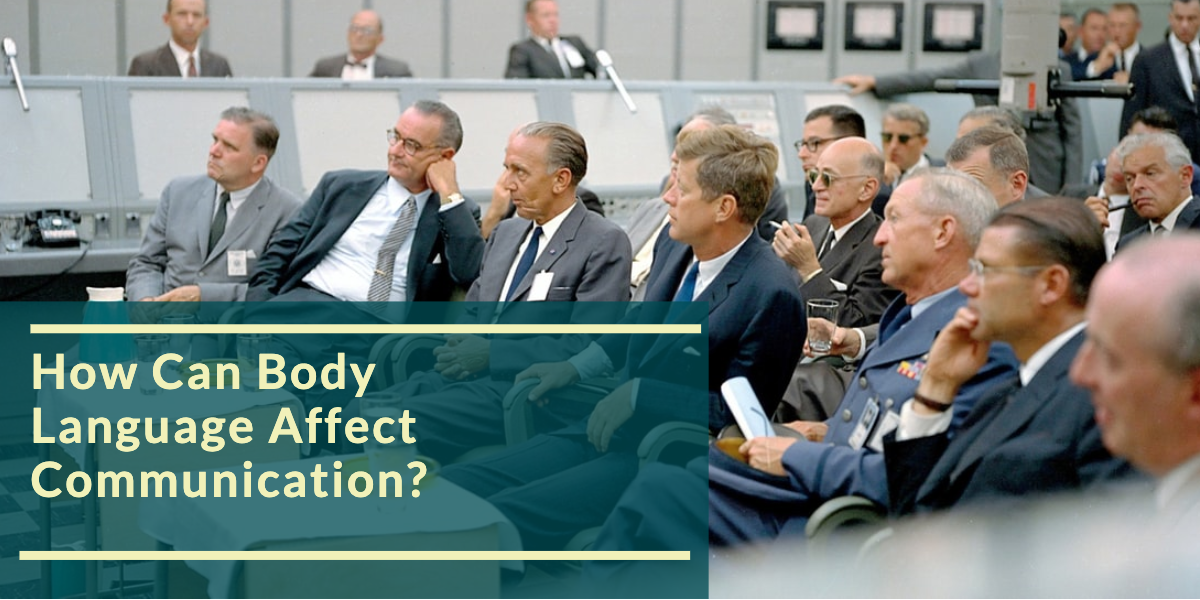Body language and communication are closely linked. Our body language affects how we communicate, and how we communicate can impact our body language. When we feel confident, our body language reflects that. We make eye contact, stand up straight, and smile. On the other hand, when we’re nervous or uncertain, we might avert our gaze, slouch, or fidget.
Good communication requires both verbal and nonverbal cues. When they’re in sync, they reinforce each other and create a cohesive message. But when they’re out of sync, it can create confusion and send mixed signals. For example, if someone is saying one thing but their body language suggests they’re uncomfortable or unsure, we might not believe them.
Body language does affect communication in many different ways in many different contexts and conversations. This article explores how and why.
The language we use to communicate with each other is represented by words – spoken or written. But there’s more to communication than just the words we use. Our communication is also influenced by our body language. In fact, both our body language and the words we use communicate together to form what we say, how we say it, and how it’s perceived. That’s why it’s not enough just to listen to what someone says; you also need to watch how they say it.
Understanding How Body Language Affect Communication.
Body Language Enhances Perceptions
Just by watching someone’s body language, you can get a sense of whether they’re comfortable or uncomfortable, confident or shy, anxious or relaxed, interested or bored. Just by watching how someone acts, moves, and glances, you get a feel for how they feel in whatever situations they are in.
Why is body language so effective?
Body language is so effective because it is the most direct form of communication. It is immediate and unambiguous. When we communicate with each other, we use body language to supplement the words we speak. It can convey messages that words cannot, such as feelings of happiness, sadness, anger, or fear. It can also help us to better understand the feelings and intentions of others.
How can body language help us understand the intentions of others?
Body language can help us understand the intentions of others by revealing their true feelings and intentions. It can be used to gauge someone’s interest, emotions, and even their overall mental state.
By reading someone’s body language, we can get a better sense of what they are really thinking and feeling, instead of just relying on what they say.
How can we learn to read body language?
To learn more about reading body language check out this article.
There is no one answer to this question as everyone may have different objectives for wanting to learn to read body language. However, some suggestions on how to learn to read body language could include studying the field of kinesics (the study of body motion and nonverbal communication), taking classes or attending workshops on the topic, practising with friends or family, and/or reading books or articles on the subject. To learn more about reading body language check out this article.
Additionally, it is important to be aware that body language varies across cultures, so if someone wants to learn to read body language in order to interpret the nonverbal cues of people from other cultures, it is important to take this into account.
Questions And Answers
1. What are some common body language cues that can affect communication?
Some common body language cues that can affect communication are eye contact, facial expressions, body posture, and gestures.
2. How can positive body language be used to improve communication?
Positive body language is a form of nonverbal communication in which physical behaviours, such as gestures, posture, and facial expressions, are used to convey positive messages. It is a powerful tool that can be used to build rapport, foster trust, and convey confidence. When used effectively, positive body language can improve communication by making it more clear, concise, and meaningful.
3. What are some ways to ensure that your body language is positive and effective?
Some ways to ensure that your body language is positive and effective include: making eye contact, smiling, having an open posture, and avoiding fidgeting.
4. How can negative body language impact communication?
Negative body language is often interpreted as a sign of boredom, disinterest, or even hostility. This can obviously impact communication negatively, as the message being conveyed is not being received well. Additionally, negative body language can make the speaker feel self-conscious or uncomfortable, which can also impede communication.
5. What are some ways to avoid using negative body language in communication?
There are many ways to avoid using negative body language in communication. Some of these include: making sure your facial expressions match the tone of your voice, avoiding crossed arms or legs, maintaining eye contact, and smiling. Additionally, it is important to be aware of your own body language and make sure that you are not sending any mixed signals.
6. How Can Body Language Help in Relationships
How can body language help with relationships? There are a few benefits of being able to read and note body language. One of the biggest benefits includes being able to see when someone is unhappy, but they aren’t able to tell you themselves. reading body language can help people recognize when they
Summary
How you use your body language can affect your ability to communicate in a number of ways. It can make you appear more trustworthy and competent, or it can make you look untrustworthy and aloof. It can also help you to better understand the emotions of others and to better regulate your own emotions. Ultimately, how you use your body language is up to you, but it is important to be aware of how it can affect communication.

